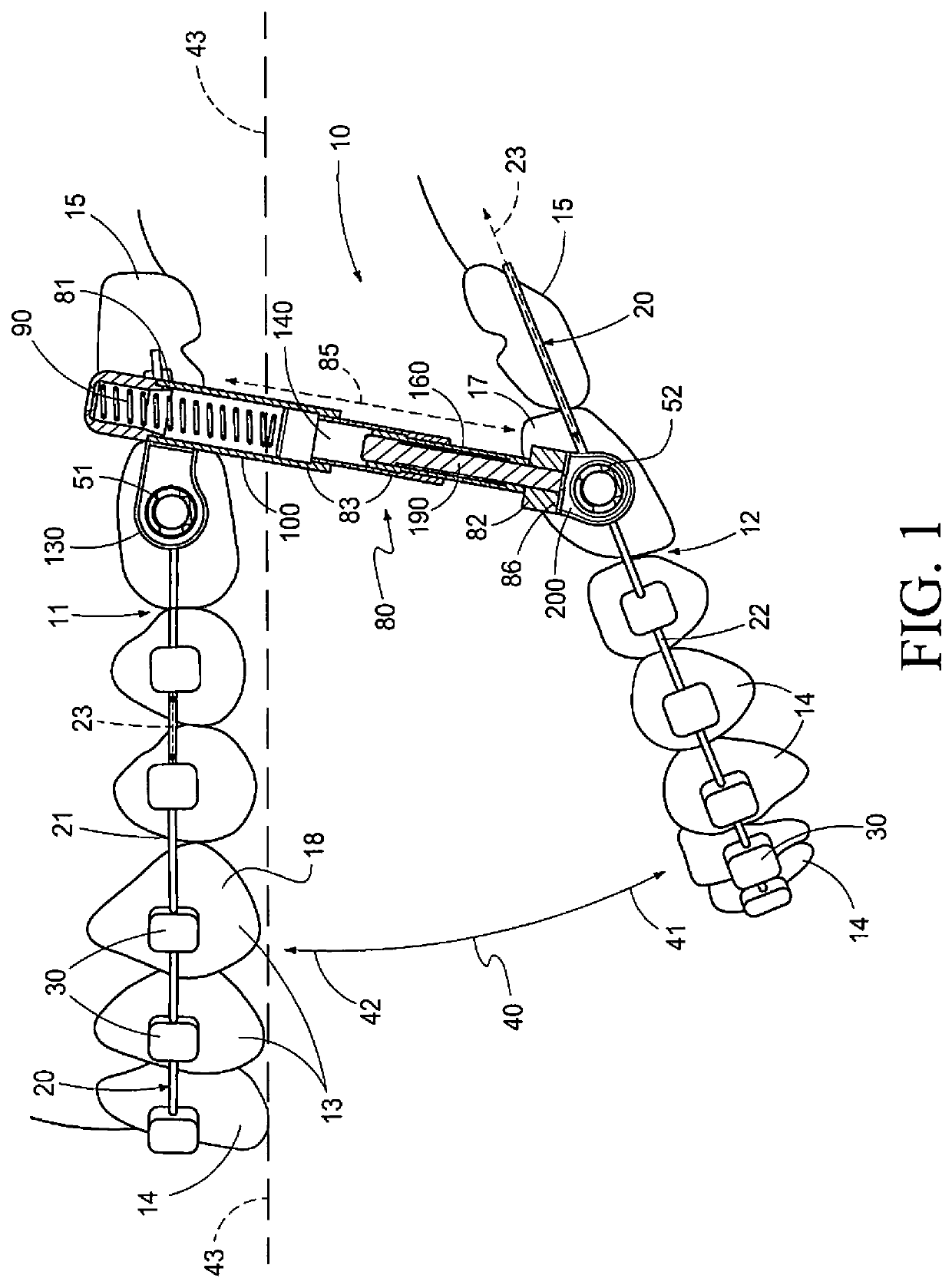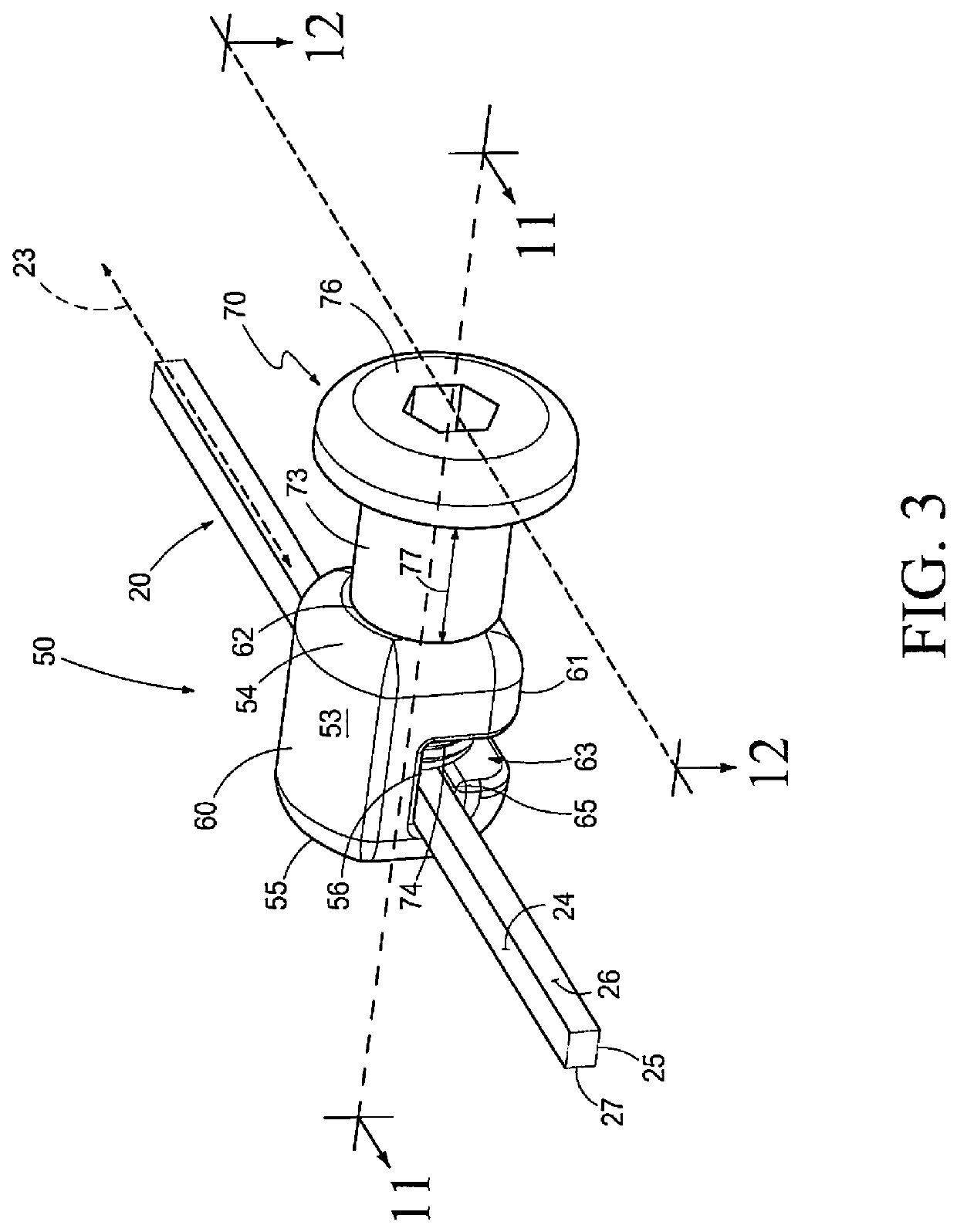Method and Apparatus for Treating Malocclusions and Teeth Alignment
a technology for malocclusions and teeth, applied in the field of methods and apparatus for treating malocclusions and teeth alignment, can solve the problems of anterior teeth having a tendency to adversely flare or tip forward, undesirable herbicide devices, and discomfort near the front of the mouth
- Summary
- Abstract
- Description
- Claims
- Application Information
AI Technical Summary
Benefits of technology
Problems solved by technology
Method used
Image
Examples
Embodiment Construction
[0052]This disclosure of the invention is submitted in furtherance of the constitutional purposes of the U.S. Patent Laws “to promote the progress of science and useful arts” (Article 1, Section 8).
[0053]Turning now to the drawings which are referenced, above, the apparatus of the present invention is generally indicated by the numeral 10 in FIG. 1, and following. The invention comprises an orthodontic appliance 10 which cooperates with both the upper and lower dental arches, and which are generally indicated by the numerals 11, and 12, of a patient so as to achieve the objectives of a predetermined orthodontic treatment regimen. The upper and lower dental arches 11 and 12 are formed of a multiplicity of teeth 13, some of which may be malpositioned, one relative to the others, and which are further variously located within the upper and lower dental arches. The upper and lower dental arches 11 and 12 have a forward portion or mesial region 14, and an opposite rearward portion or dis...
PUM
 Login to View More
Login to View More Abstract
Description
Claims
Application Information
 Login to View More
Login to View More - R&D
- Intellectual Property
- Life Sciences
- Materials
- Tech Scout
- Unparalleled Data Quality
- Higher Quality Content
- 60% Fewer Hallucinations
Browse by: Latest US Patents, China's latest patents, Technical Efficacy Thesaurus, Application Domain, Technology Topic, Popular Technical Reports.
© 2025 PatSnap. All rights reserved.Legal|Privacy policy|Modern Slavery Act Transparency Statement|Sitemap|About US| Contact US: help@patsnap.com



